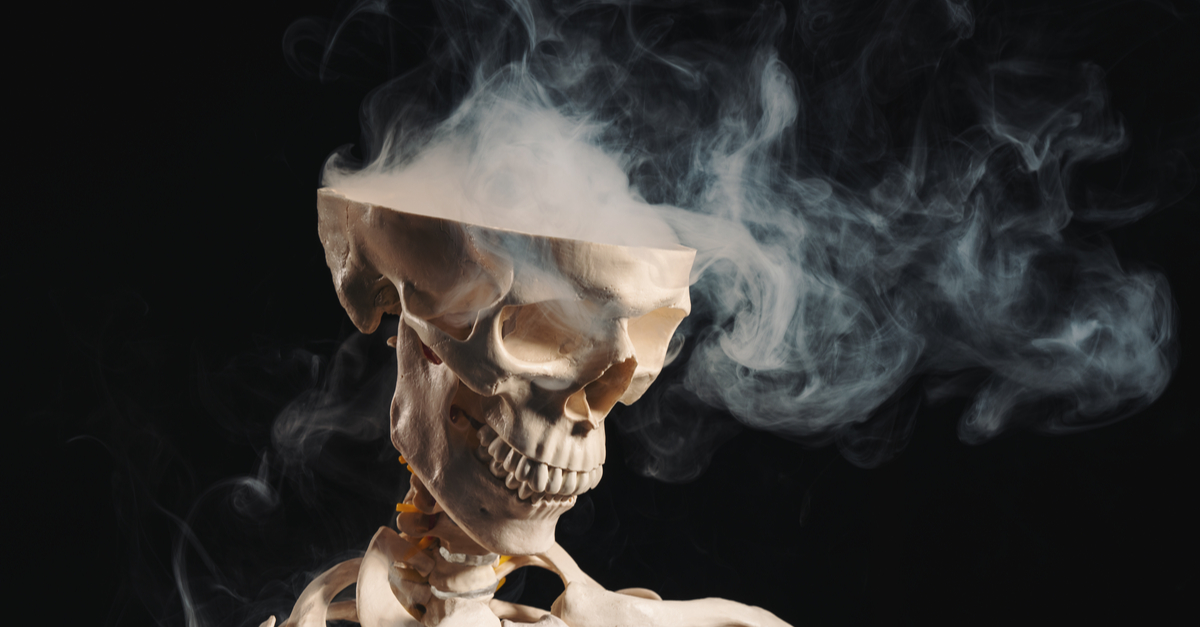Most addictions do not occur in isolation. Instead, they represent multiple behavioral expressions of a single underlying addictive disorder. Historically, however, many addicts were thought to have a single (or primary) addiction such as alcohol. But it has probably always been the case that multiple addictive behaviors such as gambling, smoking cigarettes, and sex/porn addiction have been present, as well.
Whether co-occurring or standing alone, addictions are more common than most people likely believe. One meta-analysis[i] reviewed the prevalence of addictions, including behaviors such as internet addiction and sex/porn/love addiction. This analysis looked at 83 studies with sample sizes of at least 500 subjects. The results showed that addictions to eating, gambling, the Internet, love, sex/porn, and exercise have a prevalence rate of about 2 to 3 percent of the population. Addictions to alcohol, nicotine, illicit drugs, work, and shopping appear to have a higher prevalence, ranging from 5 to 15 percent of the population. The study also concluded that in any given year approximately 47 percent of the US adult population suffers from an addictive behavior with serious negative consequences.
Other studies provide insight into compulsive behaviors that occur in some form of co-occurring pattern. For example, Canadian researchers surveyed 6000 respondents, evaluating the usage of drugs, such as alcohol, tobacco, marijuana, and cocaine, along with six behaviors, including gambling, eating, shopping, sex, video gaming, and work.[ii] About half of the respondents reported no problems with addictive behaviors in the past year, while 30 percent reported one substance or behavior as problematic; 13 percent reported two, and 8 percent reported problems with three or more addictive drugs/behaviors in the previous year. The researchers then performed a statistical analysis of various combinations of behaviors to look for patterns, finding that individuals who identified a problem with sex in the past year also identified simultaneous problematic behaviors in the following areas:
- 15 percent reported shopping-related problems.
- 35 percent reported eating disorders.
- 38 percent reported compulsive work habits.
- 22 percent reported nicotine addiction.
- 13 percent reported a problem with alcohol.
The study also found that treatment outcomes are significantly poorer if providers fail to identify and treat co-morbid addictive problems.
In another study,[iii] this one focused on sex addiction and co-occurring behaviors, it was found that substance abuse co-occurred with sex addiction at rates between 39 percent and 42 percent, a much higher level than the previously cited study. Work addiction, compulsive eating, shopping, gambling, and exercise were also found to frequently co-occur with sex addiction, at rates ranging from 8 percent to 38 percent.
Much of the research on sexualized drug use has been carried out among MSM (MSM). Sexualized drug use in this population is often referred to as chemsex. First coined in the United Kingdom, the term chemsex includes the unique constellation of sociocultural aspects experienced by MSM, including stigma and shame, and the role of these factors in fueling the behavior of sexualized drug use. That said, the phenomenon of combining drug use and sex into a single set of interrelated addictive behaviors is universal.
The 2017 European MSM Internet Survey[iv] has been one of the most comprehensive efforts to gather data about sexualized drug use. The substances most commonly used by respondents were alcohol (83 percent had used it in the past month), tobacco (43 percent), poppers (21 percent), Viagra and similar drugs (13 percent), cannabis (13 percent), and sedatives or tranquilizers (6.4 percent). Other drugs were less commonly reported: cocaine (3.9 percent in the past month), MDMA pills (3.2 percent), GHB/GBL (2.8 percent), MDMA powder (2.2 percent), amphetamines (2.1 percent), ketamine (1.5 percent), crystal meth (1.4 percent), mephedrone (1.2 percent), various synthetic stimulants (0.8 percent), synthetic cannabinoids (0.6 percent), LSD (0.4 percent), crack cocaine (0.2 percent), and heroin (0.2 percent). The survey found that only 1.2 percent of participants in the study had injected a drug to get high in the past year. Half of these men had injected four times or less in the past year.
Sexually, three-quarters of the respondents reported having sex in the past month. Of those, 64 percent had had sober sex (not involving any alcohol or drugs) and 5.2 percent had had chemsex. When the timeline was extended, 10 percent had had chemsex in the past year. Rates of chemsex were found with some consistency across all areas of the continent, including eastern Europe. In three-quarters of the countries, between 2 and 7 percent of men reported recent chemsex behavior. The outlier countries with the greatest engagement in chemsex were the Netherlands (15 percent), Belgium (11 percent), France (7.8 percent), and Spain (7.6 percent). It is noteworthy that chemsex is not just a phenomenon of more affluent nations. Chemsex behavior “in the past four weeks” was reported by 2.9 percent of respondents in Ukraine, 3.5 percent in Russia, 4.1 percent in Turkey, and 2.8 percent in Lebanon.
Since 2000, refined production techniques, changes in federal laws, and the increased role of the Mexican drug cartels have led to an ongoing methamphetamine epidemic in the United States. Nationwide, overdose deaths from methamphetamines increased by 750 percent between 2007 and 2017, and about 15 percent of all drug overdose deaths involved the use of methamphetamine in 2017. Half of those deaths also involved an opioid.[v]
While methamphetamine’s ability to heighten sexual desire and promote high-risk sex has been well-studied among MSM,[vi] patterns among heterosexuals are only now being revealed. A 2016 meta-analysis studied four risky sex outcomes associated with methamphetamine use among heterosexuals: unprotected vaginal intercourse, unprotected anal sex, inconsistent condom use, and sex with multiple partners.[vii] The analysis revealed that the odds of engaging in risky sex for heterosexual methamphetamine users are, on average, between 37 percent and 72 percent greater than for non-methamphetamine users.
In the United States, sexualized drug use among MSM has reached epidemic levels among African American and Latinx men, including many who do not identify as being gay. A 2008 study[viii] of non-gay identifying African American MSM found several themes concerning paired drug use and sex. These were:
- Exchange of sex for drugs or money to buy drugs.
- Formative early childhood sexual experiences with men that involved drugs.
- Drug use contributing to feelings of hypersexuality or sexual compulsion that were most easily satisfied by male partners.
The study further classified specific roles drugs play, including:
- Drugs as motivators in which men report sex with other men primarily because of their own drug dependence.
- Drugs as allowers, where drug intoxication allows a man to act out his desire for sex with another man despite a personal intention to avoid the behavior.
- Drugs as rationalizers, where being intoxicated was retrospectively used to rationalize same-sex behavior or being seen with an obviously gay man.
- Drugs as facilitators, in which drugs ease access to sex, sometimes including the power dynamics of sex/drug exchange.
Sexualized drug use is common among heterosexuals, as well. Both men and women of all sexual orientations report alcohol, cannabis, and MDMA as the most common drugs used with sex.[ix] A higher percentage of homosexual and bisexual men combined drugs and sex than heterosexual men. More bisexual women combined drugs and sex than heterosexual women.
More than 20 percent of the people who combined drugs and sex, of all sexual orientations, reported using drugs with the intention of enhancing a sexual experience. Various drugs were commonly cited for different sexual effects, although GHB/GBL and MDMA were consistently highly rated. Alcohol, cannabis, and MDMA were most commonly used with sex among all groups, and “chemsex” drugs (in particular cocaine and meth) were utilized by a higher percentage of homosexual and bisexual men than heterosexual men.
References
[i] Sussman, S., Lisha, N. Griffiths, M. (2011). Prevalence of the addictions: A problem of the majority or the minority? Evaluation of Health Professions. 2011 March: 34(1):3-56. doi:10.1177/0163278710380124
[ii] Thege, B.K., Hodgkins, D.C., Wild, T.C. (2016). Co-occurring substance-related and behavioral addiction problems: A person-centered, lay epidemiology approach. Journal of Behavioral Addictions. 2016 Dec 1; 5(4):614-622.
[iii] Freimuth, M., Waddell, M., Stannard, J., et.al. (2008). Expanding the Scope of Dual Diagnosis and Co-Addictions: Behavioral Addictions. Journal of Groups in Addiction & Recovery, 3(3-4), 137-160. doi:10.1080/15560350802424944
[iv] https://www.esticom.eu/Webs/ESTICOM/EN/emis-2017/emis-2017-node.html
[v] Centers for Disease Control and Prevention, National Center for Health Statistics, Multiple Cause of Death 1999-2017 on CDC Wonder Online Database, released December 2018.
[vi] Fawcett, D.M. (2016). Lust, men and meth: A gay man’s guide to sex and recovery. Wilton Manors, FL: Healing Path Press.
[vii] Hittner, J. B. (2016). Meta-analysis of the association between methamphetamine use and high-risk sexual behavior among heterosexuals. Psychology of Addictive Behaviors, 30(2), 147–157. https://doi.org/10.1037/adb0000162
[viii] Harawa, N.T., Williams, J.K., Jones, M. (2008). Sexual behavior, sexual identity, and substance abuse among low-income bisexual and non-gay-identifying African American men who have sex with men. Archives of Sexual Behavior; 37(5):748-762. doi: 10.1007/s10508-008-9361-x
[ix] Lawn W, Aldridge A, Xia R, et al. (2019). Substance-linked sex in heterosexual, homosexual, and bisexual men and women: An online, cross-sectional “Global Drug Survey” report. Journal of Sexual Medicine; 16:721–732.

